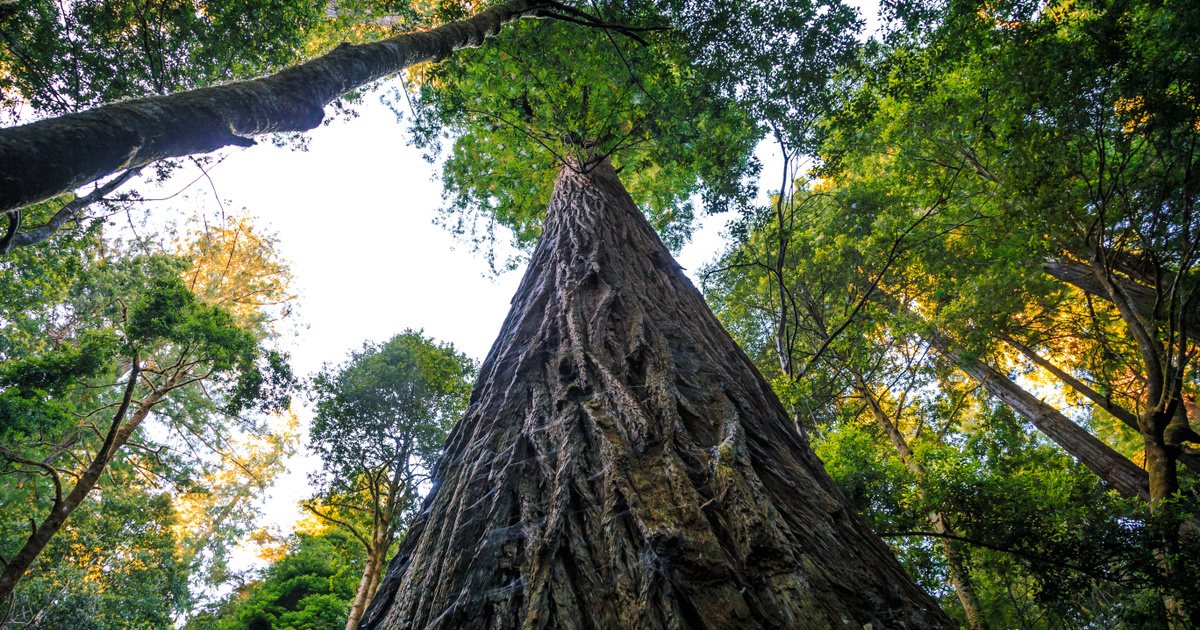The world’s strongest trees have been documented by a team of Tasmanian photographers and ecologists. Their mission is to capture the giants of special trees for future generations before they are destroyed by deforestation or other human intervention, Popular Science.
Among them is 84 meters Gandalf’s crew Eucalyptus Tasmania or globular (Eucalyptus globulus). The ubiquitous evergreen eucalyptus is one of the fastest growing and tallest tree species in the world. Nevertheless, the height of the Southern Company version would be enough only for the 15th place in the world ranking.
the above
However, the tallest tree known today has grown to a height of 115 meters and a half meters. Higher than the Statue of Liberty in New York.
An unremarkable Lilliputian species of massive coastal (evergreen or coastal) pine (Sequoia sempervirens) was discovered on August 25, 2006 by scientists Chris Atkins and Michael Taylor in a remote corner of Redwood National Park, California. Its lifespan is estimated at 700-800 years. Explorers said the tree may have been taller, but woodpeckers pinched some of its top. He still takes the trophy that he discovered in 1991 Stratospheric giant Close to a mammoth pine is called a sky scratch, with a height of only 113.8 meters.
the biggest
The oldest tree in the world: the ancient gyko. The beautiful Methuselah was a seedling even in the Polished Stone Age, about 9,550 years ago. It is a Norwegian spruce from Fulufjället Mountain in the Swedish county of Dalarna. It was discovered by Lev Coleman, a professor of physical geography, who had followed his dog Old Tjiko Baptized his name.
The most massive
The largest tree in the world by size A. General Sherman.
Although it is wider at the bottom, this is wood (Excluding branches) In its absolute size it surpasses all its living companions.
Moreover, the general is considered the largest living creature on the planet today.
Its weight is estimated at 1385 tons, its height is 83.8 meters, and its diameter (the bottom) is 11.5 meters. In ancient times, around the time of the flowering of Greek polis, saplings may have been dated to about 2,300-2700 years ago through studies of carbon isotopes.
It has survived several fires, a series of climate changes, and fortunately it has also survived the active productive work of mankind. so far.












































